
The Skull of Yorick

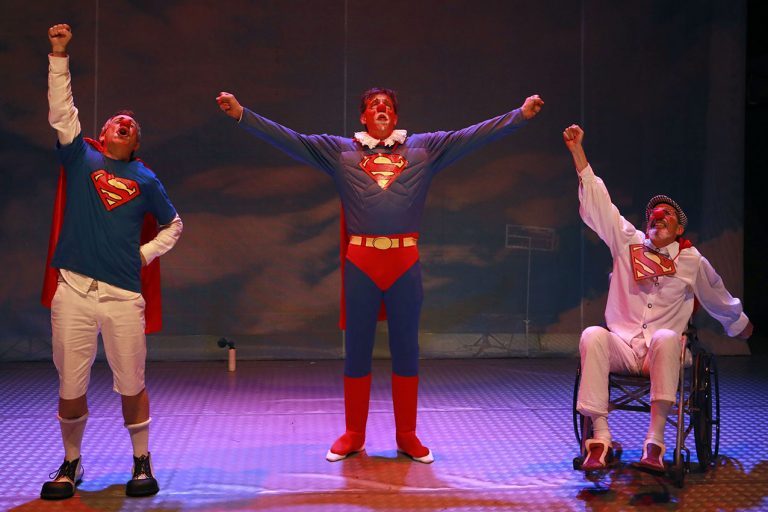
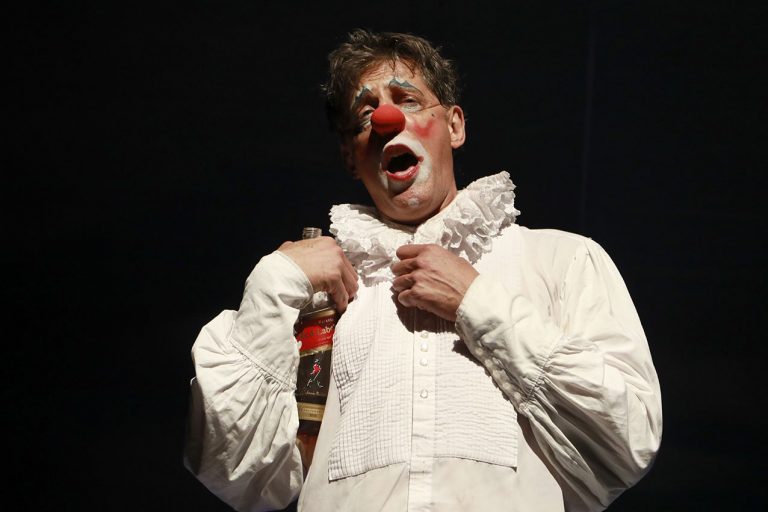
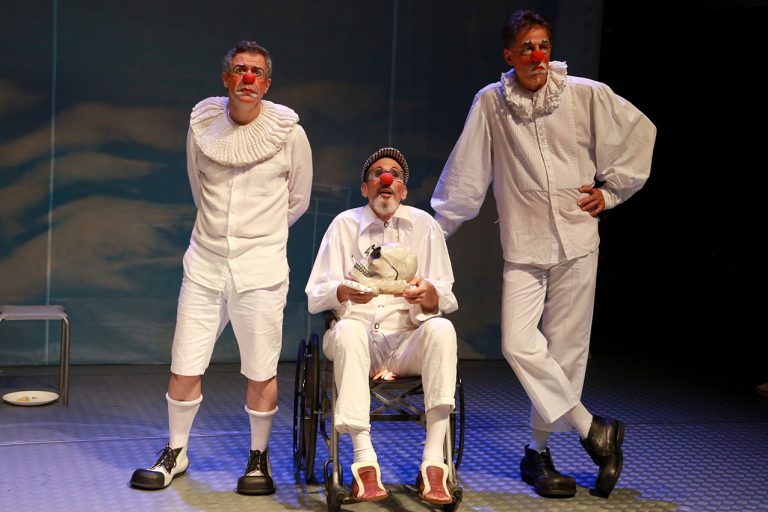
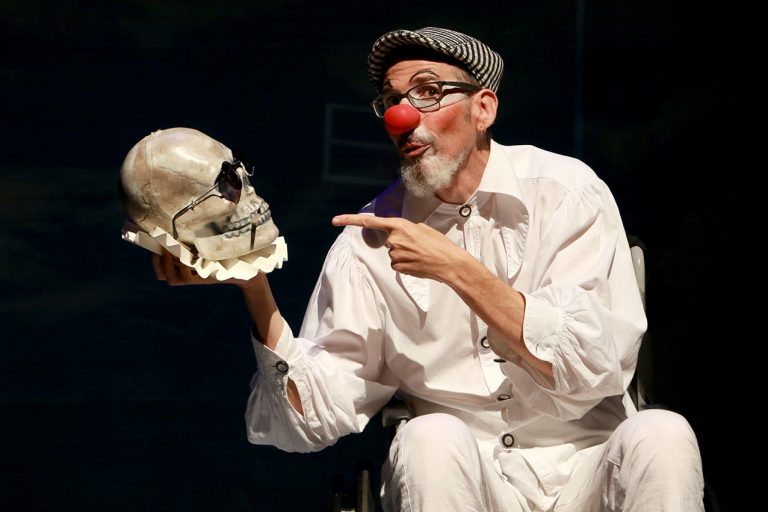
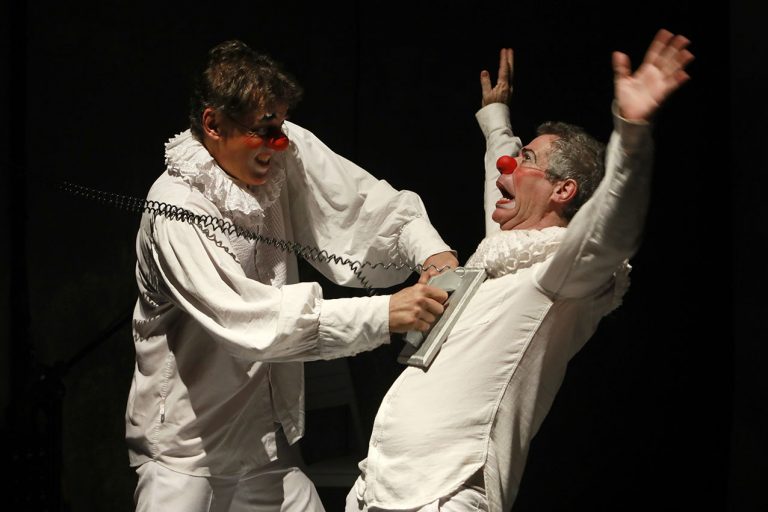
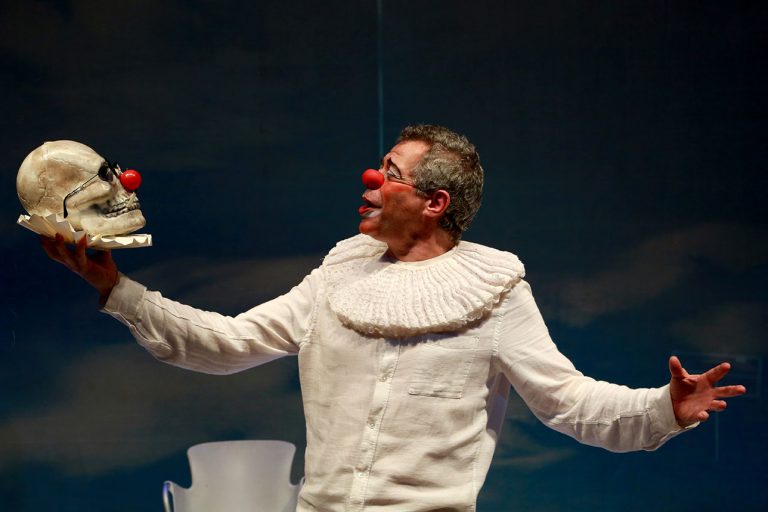

The Skull of Yorick
Parlapatões present The skull of Yorick, written and directed by Hugo Possolo. On stage, Hugo Possolo, Raul Barretto and Nando Bolognesi show us how old clowns see tragic matters.
In Shakespeare’s most celebrated tragedy, Hamlet, the sole instance of comedy occurs in the scene involving the gravediggers. In the play, Hamlet holds skulls in his hands and comes across that of Yorick, the court fool who made his childhood happy. The image that most represents the tragedy of the old bard is Hamlet with his skull raised. In other words, the moment of tragedy that has been immortalised in the imagination is the very moment when comedy is highlighted by tragedy. In this show, the clowns seek an inversion, raising tragic images within the comic environment.
In disparate scenes of the play, the three clowns confront the reality of loss and mortality in order to identify a means of transcendence. The three elderly clowns, aged over 60 (one of whom is PCD in a wheelchair), illustrate a perspective that seeks to transcend the tragic through humour and a degree of optimism. They adopt a range of approaches, from a motivational discourse on eternal life to a tableau encompassing diverse methods of suicide.
Additionally, the play provides insight into the background of the initial staging of Shakespeare’s tragedy. It portrays the departure of the comedian Kemp from the company, motivated by his perception that his role in Hamlet is insufficiently prominent.
The three clowns also direct their attention to their own discourse, or perhaps their own act of listening, thereby offering a male perspective on the difficulties of being a sensitive man, or rather, a sensitive superman. Alternatively, one might say that they present a male perspective on the challenges of being a sensitive but deconstructed superman.
In another scene, a clown is surprised to find the body of another dead clown, describing all his tragicomic impressions as taken to the absurdity of a comic understanding of life. The audience participates by playing improvisation, offering ideas about how the inversion of the basic icons of tragedy can be seen, revised and anarchised by comedy.
Yorick’s plays with the concept of the meaning of life, encouraging performers and audience alike to engage in a significant reflection on the decisions they make in the face of daily challenges and the numerous opportunities to give up that are always presented to us. Clowns, under the gaze of whom the plays are performed, offer a distorted perspective, whether expanded or reduced, that provides new possibilities and instils hope through a joyful and critical approach.
The Skull of Yorick represents a further outcome of Parlapatões‘ investigation into the figure of the clown and the buffoon. This work seeks to challenge linguistic conventions by encouraging the audience to engage in a shared experience of risk and adventure.
The scenes are presented in a non-linear sequence, yet they collectively form a compelling conclusion that evokes a sense of empathy for the audience’s own mortality.
Excerpt from the play
“Perhaps the most unfortunate end is political death. It is difficult to witness the tragic consequences of certain actions, even seemingly minor ones, and realise that they can lead to the loss of life. We are bearing witness to this tragic outcome. It is important to remember that Hitler was elected, and that is what ultimately led to the tragic events that followed. I believe it’s important to remember that this is not just about elections. It’s about humanity. Perhaps it would be beneficial to consider that those who espouse conservatism may not fully comprehend the extent to which conservatism is shaped by ignorance. Perhaps they are unaware that when there is a reluctance to embrace change, there is a risk of losing hope. History shows us that when humanity is inclined to conserve and resist change, there is a tendency towards hatred, patriotism and militarism, which can have detrimental effects on our collective future. We may lose our homes, our nations and our children. (Time.) It is also worth noting that in their efforts to gain legitimacy, totalitarian regimes have often sought to silence those who challenge them, including those who provide entertainment and laughter”. (Excerpt from the text of Hugo Possolo’s play)
Production Credits
Written, directed, set and costumes: Hugo Possolo
Cast: Hugo Possolo, Nando Bolognesi and Raul Barretto.
Lighting design: Benedito Teixeira
Sound operation: Deivison Nunes
Stagehand: Rodrigo BellaDona
Visual programming: Werner Schulz
Production Coordination: Cris Zonzini
Production coordination: Hugo Possolo and Raul Barretto
Directed by: Parlapatões / Agentemesmo Produções Artísticas
*Play produced in a project of the 30th edition of the Municipal Theatre Promotion Program of the City of São Paulo.

